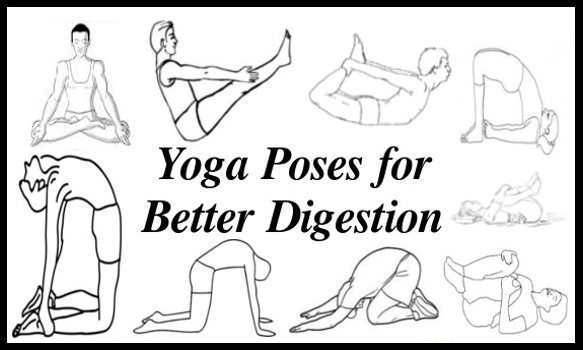Yoga is practiced to promote health and relaxation with synergy of the mind, body, and spirit.
“Yoga is the golden key that unlocks the door to peace, tranquility and joy.” – BKS Iyengar
Digestion is key to eliminating excess body waste and clearing out those toxic materials that don’t serve our body or mind.
The added benefit of yoga is it also helps relieve stress. It empowers your body’s digestion and improves the health of your organs.

How can yoga asanas improve digestion?
- Yoga asanas keep the mind active and happy. You are more likely to eat a balanced diet and this eases digestion.
- Regular practice of yoga discourages fatty deposits.
- Circulation of blood to the digestive organs increases, thus aiding digestion.
Tips to improve your digestion:
- Do not lie down immediately after a meal.
- Avoid eating heavy meals at night.
- Keep away from stress. This leads to binging and consequently, digestive disorders.
- Chew your food well. It reduces pressure on your digestive organs.
“Good posture daily can help with stomach discomfort” – Greuner
Having stomach troubles? Try these yoga poses to help ease digestion.
1. Lotus Pose (Padmasana):
Padmasana means “Lotus throne” and is also a term for actual thrones, often decorated with lotus foliage motifs, on which figures in art sit.
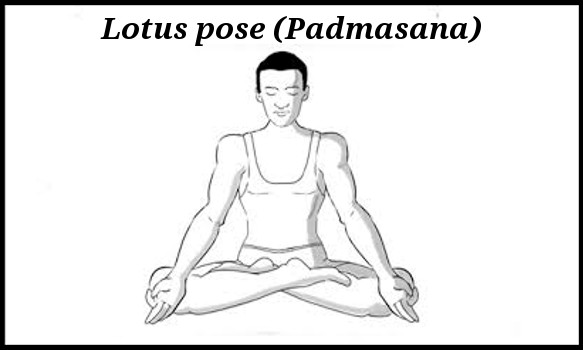
It is a cross-legged sitting asana originating in meditative practices of ancient India, in which the feet are placed on the opposing thighs.
The asana is said to resemble a lotus, to encourage breathing properly through associated meditative practice, and to foster physical stability.
Benefits of Lotus Pose:
- Improves digestion.
- Opens up the hips.
- Relaxes the mind.
- Reduces muscular tension and brings blood pressure under control.
- Keeps the spine straight.
2. Boat Pose (Paripurna Navasana):
“Boat Pose”, the body could be imagined to resemble a boat, entirely balanced on the buttocks.
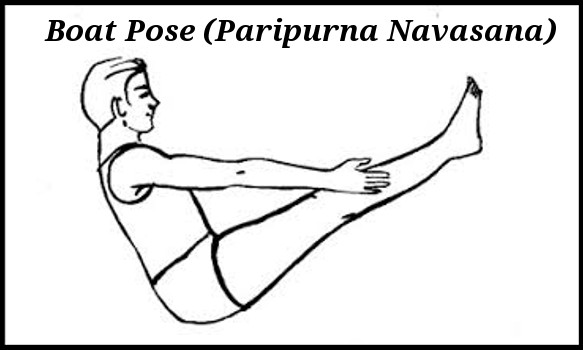
This pose relieves stomach and liver pressure by allowing air to flow through the abdomen. This asana also challenges balance, stimulates the kidneys, thyroid and prostate glands, and intestine.
Benefits of Boat Pose:
- Improves balance and digestion.
- Aids in stress relief.
- Improves confidence.
- Tones and strengthens your abdominal muscles.
- Strengthens your spine and hip flexors.
3. Bow Pose (Dhanurasana):
This is sometimes called Urdva Chakrasana. The name comes from the Sanskrit word Dhanura meaning “bow”.
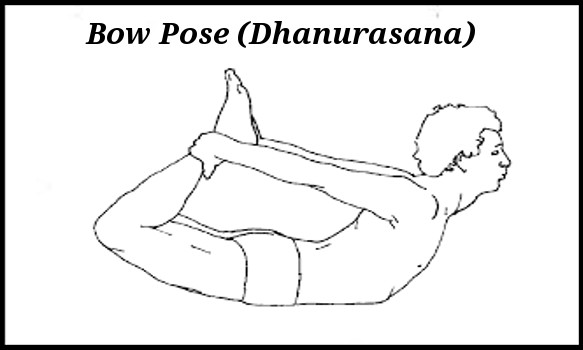
First the practitioner should lie prone and grasp the feet to lift the leg and chest to form a bow. Remain in this position for some time and then return to the previous position.
Bow pose opens up space in the abdominal area and lengthens the torso region, which houses the digestive system.
Benefits of Bow Pose:
- Improves digestion and appetite.
- It provides relief from headache.
- Good stress and fatigue buster.
- Adds greater flexibility to the back.
- Effective in weight loss.
4. Bridge Pose (Setu Bandhasana):
The name of this pose comes from “setu” meaning “bridge” and “bandha” meaning “bound”.
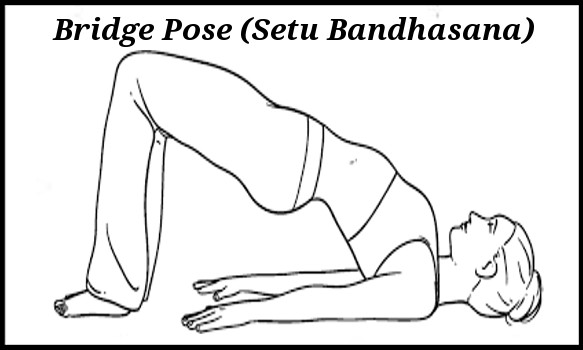
This pose stretches the abdominal area allowing for efficient digestion as it aligns the digestive organs in optimal positions. The pose also stimulates the thyroid, which also increases digestion.
Benefits of Bridge Pose:
- Improves digestion.
- It strengthens the leg and glute muscles.
- Improves circulation of blood.
- Stimulates the lungs, thyroid glands, and abdominal organs.
- Calms the brain and central nervous system.
5. Wind Relieving Pose (Pavanamuktasana):
The name comes from the Sanskrit words pavan meaning “wind” and mukta meaning “relieve”.
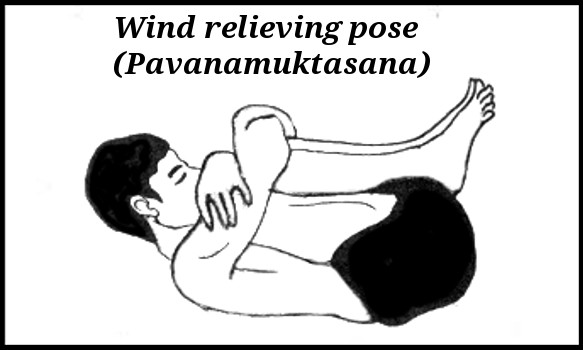
Pavanamuktasana, as its name states, is most useful for helping to release unwanted and toxic gases from the digestive system.
Benefits of Wind Relieving Pose:
- This improves the digestion system and helps have good motion.
- It strengthens the back muscles and tones the muscles.
- Improves the circulation of blood in the hip area.
- It helps to stretch the back and neck.
- It helps burn fat in the thighs, buttocks, and abdominal area.
6. Camel Pose (Ustrasana):
Ustrasana or Camel Pose is a deep back-bending yoga asana. It makes our body fit and active.
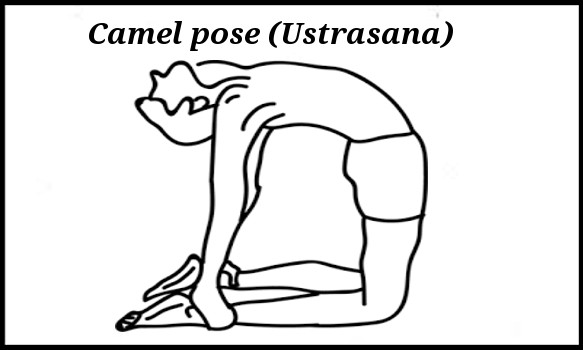
After performing Ustrasana, the pulse rate will often have increased considerably, while the breathing should be deep and slow.
Benefits of Camel Pose:
- Improves digestion.
- Relieves the body of lower back ache.
- Helps overcome menstrual discomfort.
- Improves flexibility of the spine and also improves posture.
- It also strengthens the back and shoulders.
7. Cat Pose (Marjaryasana):
Marjaryasana is translated as Cat Pose from Sanskrit. The name of this pose comes from “marjara” meaning “cat”, and “asana” meaning “posture” or “seat”.
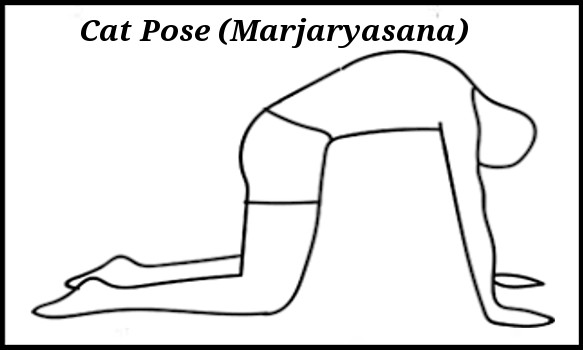
Cat pose is one of my favorite ways to strengthen the spine and massage the belly organs, all while getting rid of excess gas and bloating.
Benefits of Cat Pose:
- Gives a good massage to your digestive organs.
- This pose stimulates the internal organs of the torso.
- Stretches the back and neck muscles.
- Strengthens wrists and shoulders.
- Relaxes the mind.
8. Knees To Chest Pose (Apanasana):
Apana is Sanskrit for “downward-moving life force”. It is also known as “knees-to-chest pose” or “wind-relieving pose”.
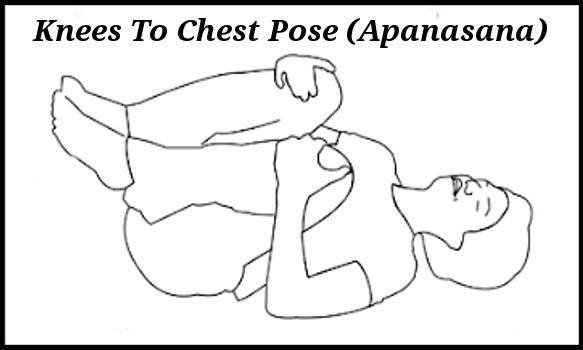
To perform apanasana, the yogi lays on his/her back and brings both knees in toward the chest, with the legs and feet together.
Benefits of Knees To Chest Pose:
- It also gives a gentle massage to the abdominal organs, thus improves digestion.
- This pose helps to keep your low back limber.
- This pose helps to calms the mind.
- This asana is often recommended for IBS (irritable bowel syndrome).
- Reduces excessive anger, excitement, anxiety and high blood pressure.
9. Child Pose (Balasana):
Balasana is an easy yoga asana that can even be performed by beginners. The name comes from the Sanskrit word bala meaning “child”.
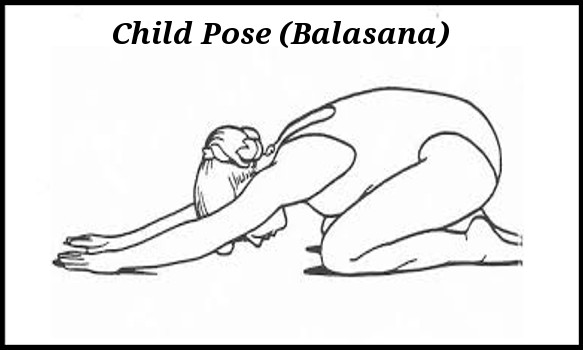
Balasana, child’s pose, has the effect of compressing the abdomen while massaging the internal organs. It can also relieve gas pains.
Benefits of Child Pose:
- Improve your digestive fire with the regular practice of child pose.
- It helps release tension in the chest, back, and shoulders.
- It helps to reduce stress and anxiety.
- It promotes blood circulation all throughout the body.
- It helps to stretch the ankles, hips, and thighs.
10. Peacock Pose (Mayurasana):
It is an asana where the individual assumes a peacock like posture.
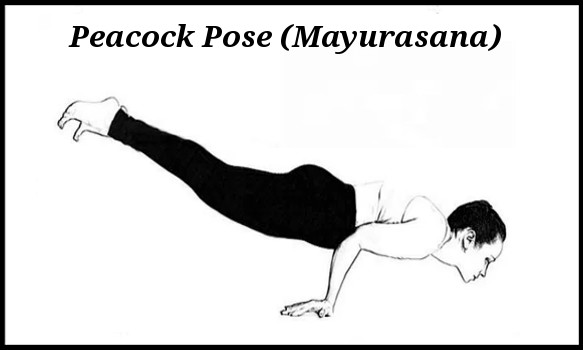
Yogi masters say that if you practice this pose consistently, you’ll be able to eat anything you want and have perfect digestion.
This asana tones up the abdominal portion of the body. It also strengthens the fore arms, wrists and elbows.
Benefits of Peacock Pose:
- Improves the function of digestive system and makes abdomen stronger.
- Peacock Pose removes toxins and detoxifies your body.
- Makes your elbows, wrist, spine, and shoulders stronger.
- Increases your focusing power of the mind.
- Peacock Pose is beneficial in piles and diabetes.
11. Yogic Squat Pose (Malasana):
The term malasana is commonly used in the West for the “regular squat pose,” also called upaveśāsana, in which the handpalms are folded together in namaskar mudra (prayer posture) in front of the chest, and the feet are set wider apart.
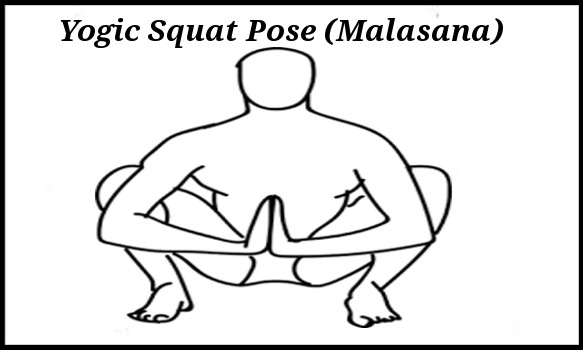
Malasana stimulates the metabolism and the digestive organs (helps the body eliminate waste) thus relieving constipation and menstrual cramps.
Benefits of Yogic Squat Pose:
- It activates the digestive system.
- It gives the lower back, the sacrum, the groin, and the hips a good stretch.
- It tones the belly.
- It increases flexibility in your ankles and knees.
- It instigates metabolism.
Quotes about Yoga:
Yoga does not just change the way we see things, it transforms the person who sees. – BKS Iyengar
Yoga is a way to freedom. By its constant practice, we can free ourselves from fear, anguish and loneliness. – Indra Devi
I think yoga builds strength, flexibility, and calming of the mind – which is never a bad thing. – Joyce DiDonato
Yoga probably makes me a better person. – Jennifer Morrison
Yoga gave me the ability to calm down. – Christy Turlington
Yoga is almost like music in a way; there’s no end to it. – Sting
Yoga is not a religion. It is a science, science of well-being, science of youthfulness, science of integrating body, mind and soul. – Amit Ray
Yoga is the cessation of the movements of the mind. Then there is abiding in the Seer’s own form. – Patanjali
Inhale the future. Exhale the past. – Unknown
Yoga is the journey of the self, through the self, to the self. – The Bhagavad Gita
Yoga is the perfect opportunity to be curious about who you are. – Jason Crandell
Yoga is the fountain of youth. You’re only as young as your spine is flexible. – Bob Harper
Related:
Surya Namaskar Yoga (Sun Salutation) – 12 Steps and Benefits
